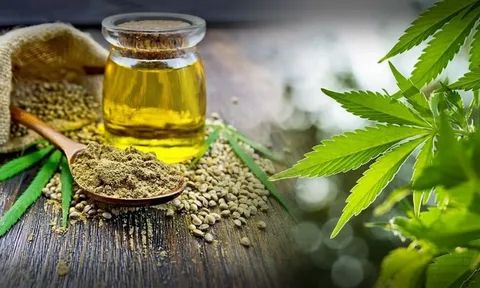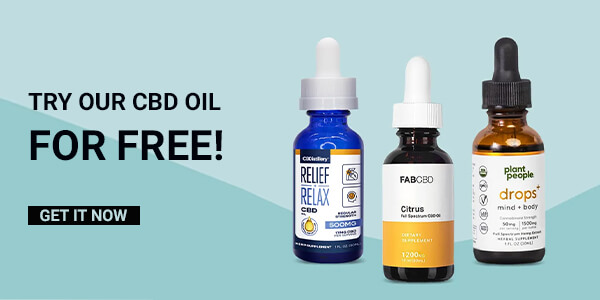CBD oil is a natural product that is derived from cannabidiol. As CBD oil in the market has increased in value, carrier oils such as olive oil or coconut have decreased because pure CBD oil uses hemp as its base.
In making CBD, (Russo & Comi (2016), cannabidiol is separated from cannabinoids and other naturally found compounds in the plant. It only leaves behind 100% pure cannabidiol extract. The resulting product is pure and potent but does not have the psychoactive effects found in THC. This article will discuss how CBD is used, the benefits, and the process of obtaining a quality final CBD product.
The Benefits of CBD Oil
Flexibility
According to Wilsey et al. (2013), CBD oil offers a more flexible dosage. They are usually packaged in a small, obscure medicine bottle with an eye-dropper. Unlike capsules, the dosage is more flexible. It depends on personal needs or feelings on limiting the dose to a few drops or consuming as many as 30 drops for stronger effects.
They are Easy to Swallow
To some people, it is usually a challenge to consume capsules and softgels, but CBD oil can be a perfect solution. Apart from being easy to swallow, CBD oil is flavorless and odorless. It means you will hardly notice the drops going down until you feel the effects.
Has High Bioavailability
Bioavailability is any supplement’s ability to break down and absorb within the body in pharmacology. In CBD, bioavailability depends on the format in how it is consumed. While CBD oil is placed under the tongue rather than consumed orally, it goes directly to the bloodstream through the sublingual gland. Millar et al. (2020) agreed that taking CBD in the form of oil will allow it to absorb more readily than ingesting CBD capsules.
Added to Food or Drinks
Because they are a convenient eye-dropper format, CBD oils are easily mixed with food and beverages. Decide whether you want to mix CBD in your breakfast cereal in the morning or your Gatorade post-workout.
Is CBD Sustainable and Eco-Friendly?
As the number of people purchasing CBD increases globally, more people from different walks of life use it daily. Liebling et al. (2022) found 1.3 million CBD active users in the United Kingdom. As with the large-scale industries, there is a need to consider the growing impact of this growth. People don’t understand when talking about the sector how the use of CBD plays a major role in the wider sphere of environmentalism.
One important process behind CBD that has to be considered is how harvesting, cultivating, and shipping affect the environment. Global industries have a knock-on effect in terms of emissions. It is important to consider the hemp business’s impacts on the world.
Part of the major benefit of the hemp plant is its wide range of use. It’s usually not a matter of growing plants for use in the CBD oils, but each part of the plant is used for a particular purpose. The major fibrous by-product is perfect for creating rope, paper, and textiles. These seeds are high in positive fatty omega acids.
This means that there is very little wastage harvesting and cultivation of Hemp. Each element of the hemp plant has multiple uses. These make it a very efficient crop to dedicate land to. But this is not to say that every hemp crop is used to its full potential. But it still suggests that the farming of hemp has a bright global future. Marino et al. (2015) identified it as one of the environmental benefits of CBD.
CBD Effects and the Environment
Practices between businesses vary wildly, and the information is not always revealed to the public. It is impossible to make a definitive statement on how every stage of hemp production impacts the environment. However, consider how the hemp pant interacts with their precise location and the wider environmental sphere. The hemp plant grows at a high rate. A higher production rate is achieved by using small land portions, improving efficiency. It is also hard. More interestingly, it has been shown that the hemp plant positively impacts the surrounding oil. It is reflected in Hemp’s positive impact on air quality.
Harvesting and Transporting CBD
Due to the quick growth rate and how the plant reaches deep into the soil, harvesting hemp allows an easy rotation during each harvesting period. Whereas other fields will need fallow years quickly, the process takes longer with hemp. The harvesting process followed by hemp is the same as any other crop, though the extraction stage for CBD uses pressurized CO2. It is why hemp extracts make clean CBD products and have a good safety profile.
The major issue with hemp is a limitation placed on the growth in certain key points around the United Kingdom and worldwide. While it is legal to import, use and sell for industrial purposes. There are strict restrictions on its growth. This means that hemp has unnecessarily high carbon print because of the need to ship it to mass distances.
The Final Product: Cannabidiol
Naturally, hemp products are 100% biodegradable and can be recycled. Because of the mass amount of carbon they process, any process that makes them on a more permanent basis, like building materials and textiles, represents a large-scale carbon removal. The process is known as carbon sequestration. Industrial hemp plants are part of the loose network of high biomass crops that store a high percentage of carbon via photosynthesis. It is the reason why there are useful as biofuels. However, it also gives all hemp plants a multifold purpose despite the intent when creating them.
Creating Eco-conscious and Vegan-friendly CBD
CBD oil is extracted from hemp flower distillation and extraction. The process has therapeutic and industrial uses. Despite cannabidiol oil having many extraction mechanisms, the best environmentally safe ones are ethanol solvent and carbon extraction methods, as they synthesize the highest quality of cannabidiol oil.
Conclusion
Although the cannabis authorization and its associated products need clarification, evidence shows that hemp provides sustainable alternatives. They provide prolonged economic and environmental future benefits. Industrial benefits like hemp seeds and fiber may substitute multiple industry essential but not non-sustainable materials like cotton. Hemp oil is superior in renewable energy sources due to its low-input cultivation needs. Generally, the carbon dioxide sequestration hemp plant effect solves large environmental crises via its existence by employing the best farming, harvesting, and extraction techniques. Hemp and its associated compounds may help the world realize better and more sustainable future resources.
References
Liebling, J. P., Clarkson, N. J., Gibbs, B. W., Yates, A. S., & O’Sullivan, S. E. (2022). An Analysis Of Over-The-Counter Cannabidiol Products In The United Kingdom. Cannabis And Cannabinoid Research, 7(2), 207-213.
Marino, D., Marucci, A., Palmieri, M., & Gaglioppa, P. (2015). Monitoring The Convention On Biological Diversity (CBD) Framework Using Evaluation Of Effectiveness Methods. The Italian Case. Ecological Indicators, 55, 172-182.
Millar, S. A., Maguire, R. F., Yates, A. S., & O’Sullivan, S. E. (2020). Towards Better Delivery Of Cannabidiol (CBD). Pharmaceuticals, 13(9), 219.
Russo, F., & Comi, A. (2016). Restocking In Touristic And CBD Areas: Deterministic And Stochastic Behavior In The Decision-Making Process. Transportation Research Procedia, 12, 53-65.
Wilsey, B., Marcotte, T., Deutsch, R., Gouaux, B., Sakai, S., & Donaghe, H. (2013). Low-Dose Vaporized Cannabis Significantly Improves Neuropathic Pain. The Journal Of Pain, 14(2), 136-148.
I presently work as a GP in London. Using the acquired academic and professional experience, I advise patients with various complaints about mental health – depressed mood, nervousness, lack of energy and interest, sleep disorders, panic attacks, obsessive thoughts and anxieties, difficulty concentrating, and stress. In my free time, I love to paint and go on long walks on the beach. One of my latest obsessions is sudoku – a wonderful activity to calm an unease mind.
[email protected]
- CBD Oil Tincture By JustCBD UK-Flavorful Explorations: Navigating JustCBD’s UK CBD Oil Tincture Odyssey - October 14, 2023
- Vape Kit By Vapesourcing-The Ultimate Vape Kit Comprehensive Review and Analysis - October 12, 2023
- Best CBD Oil Products - February 4, 2023








